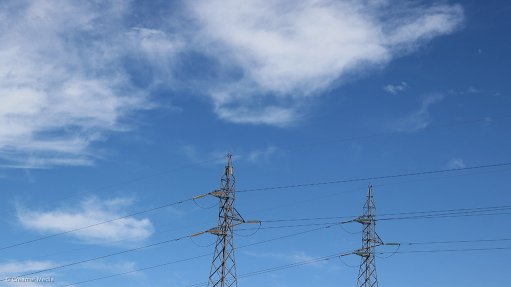
Photo by: Megan van Wyngaardt
Today Eskom releases its 334th update on the state of the power system. Eskom’s system status bulletin is released twice a week in line with its commitment to regular and transparent communication on the power system, which is expected to be constrained for the foreseeable future.
The system remains constrained but stable today. The forecast for tomorrow(Friday) into the weekend indicates that the system will remain constrained, meaning any extra load or faults in the system may necessitate the need to go into load shedding. The need to use electricity sparingly must become a lifestyle for South Africans as we are running a system with a low reserve margin. The system will become extremely constrained at the beginning of next week, when businesses and industry resume operations after the long weekend.
Eskom continues to make progress with its programme of planned maintenance. The capacity available to meet demand depends on the number of generating units that are unavailable for planned and unplanned maintenance. We therefore urge all customers to partner with us to save at least 10% of their electricity usage throughout the day. This will help us manage the power system during this challenging time, while also enabling us to do adequate maintenance to ensure the reliability of our plants.
Eskom calls on all South Africans to pull together over the next few months and use electricity sparingly by “Living Lightly” this summer. Less is more this summer and homeowners and businesses can do so with just four steps: first, switching off geysers and pool pumps; second, switching off non-essential lights; third, efficient use of air-conditioners by keeping the room temperature at 23⁰C; and finally, responding to the alerts on TV each evening.
Trends in the supply and demand of power in South Africa are as follows:
Today (Thursday 02 April): The capacity available to meet this evening’s peak demand is 31 998 MW (including open cycle gas turbines) while demand is forecast at 29 594 MW. Current planned maintenance stands at 6 206 MW. Unplanned outages are 6 818 MW.
Tomorrow (Friday 03 April): The capacity available to meet tomorrow’s evening peak demand is 33 437 MW (including open cycle gas turbines) while demand is forecast at 27 296 MW.
Saturday (04 April): The capacity available to meet that evening’s peak demand is 32 848 MW (including open cycle gas turbines) while demand is forecast at 27 885 MW.
Sunday (05 April): The capacity available to meet that evening’s peak demand is 31 618 MW (including open cycle gas turbines) while demand is forecast at 27 521 MW.
Monday (06 April): The capacity available to meet that evening’s peak demand is 31 003 MW (including open cycle gas turbines) while demand is forecast at 29 420 MW.
Tuesday (07 April): The capacity available to meet that evening’s peak demand is 31 193 MW (including open cycle gas turbines) while demand is forecast at 31 462 MW.
Wednesday (08 April): The capacity available to meet that evening’s peak demand is 31 073 MW (including open cycle gas turbines) while demand is forecast at 31 582 MW.
Yesterday (Wednesday 01 April): Peak demand of 30 031 MW met by available capacity of 31 007 MW (including open cycle gas turbines).
Tuesday (31 March): Peak demand of 30 855 MW met by available capacity of 32 447 MW (including open cycle gas turbines).
Monday (30 March): Peak demand of 31 243 MW met by available capacity of 33 008 MW (including open cycle gas turbines).
Top saving tips at home:
There is a golden rule that applies to saving electricity in the home: If you’re not using it, switch it off.
By partnering with Eskom and changing the way we use energy everyday, you can make a difference to the electricity supply shortage in our country
Geyser – it guzzles 39% of your monthly energy usage. Switch it off to reduce your energy demand. Don’t forget to insulate the geyser and water pipes.
Shower – it uses less water than bathing and using less hot water means less work for the geyser. Use an energy efficient shower head since it uses less water.
Lighting – replace all your incandescent bulbs with energy saving Compact Fluorescent Lamps (CFL) and switch off the lights in unoccupied rooms.
Standby electricity – don’t leave your TV, DVD player, etc. on stand-by mode, they still use up to 50% off their operating power. Rather switch them off at the power switch and don’t forget to unplug your cell phone charger after your phone has been charged or it will continue to draw power.
Refrigeration – close your fridge door quickly so it doesn’t use extra power to get back to its optimal cooling level.
Temperature control – keep the room temperature between 18°C - 23°C, this is known as the “golden zone”.
For additional tips on how to trim 10% off your consumption, click here
Issued by Eskom Media Desk